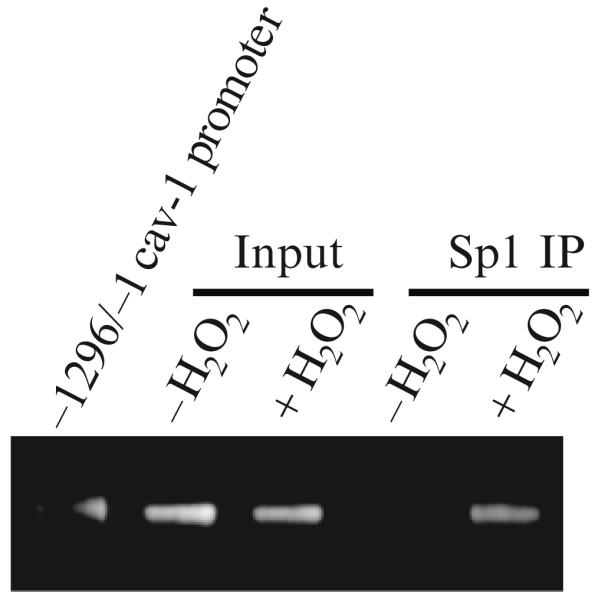Fig. 29.3.

Oxidative stress promotes the binding of Sp1 to GC-rich elements within the caveolin-1 promoter. ChIP assay. Chromatin immunoprecipitation assay was done on chromatin derived from untreated or hydrogen peroxide-treated (150 μM for 2 h) NIH 3 T3 cells 48 h after oxidative stress using an antibody probe specific for Sp1. PCR was performed using primers surrounding the region of the caveolin-1 promoter containing the two GC-rich boxes. Amplification of input DNA from both untreated and H2O2-treated cells was performed before immunoprecipitation. A vector containing the entire caveolin-1 promoter sequence was used as a positive control for PCR. Figure adapted from ref. (30).
